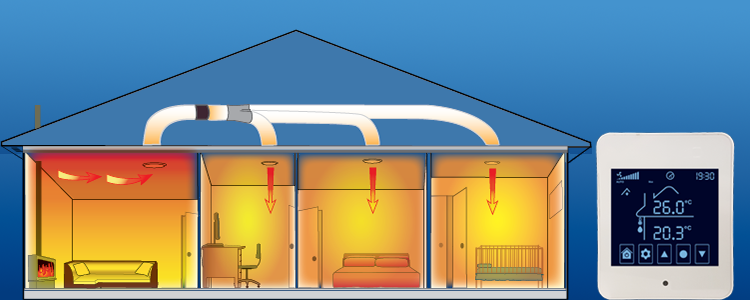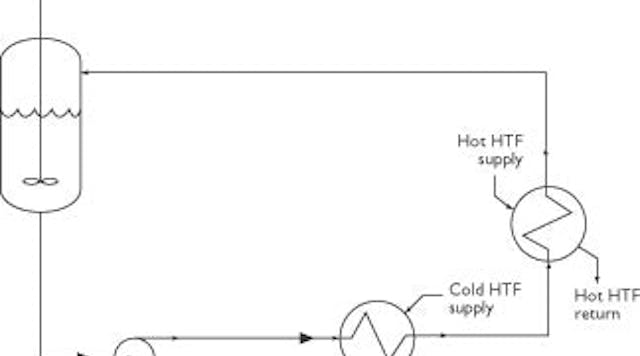Actionable Tips for Using DVS Heat Transfer Systems in Data Centers
Wiki Article
A Comprehensive Overview to Choosing the Right Heat Transfer Solutions for Your Needs
Selecting the suitable Heat transfer system is vital for operational efficiency. Various systems accommodate various needs, affected by elements such as temperature level variety and fluid type. Understanding the principles behind Heat transfer, such as radiation, convection, and transmission, is vital. Furthermore, assessing power resources and maintenance techniques can influence long-lasting efficiency. A closer examination of these factors to consider exposes just how to tailor a system to details requirements. What should one prioritize in this facility decision-making process?Recognizing Heat Transfer: Trick Concepts and Principles
Although Heat transfer might seem like an uncomplicated concept, it encompasses a series of principles that are fundamental for effective system layout. Recognizing these concepts is vital for designers and designers who intend to optimize thermal efficiency in different applications. Conduction, as an example, entails the transfer of Heat with strong products, while convection refers to the movement of Heat within liquids. Radiation, an additional vital concept, defines exactly how Heat can be moved via electro-magnetic waves. Each of these systems plays a crucial role in establishing exactly how energy moves within a system. By completely comprehending these ideas, specialists can make educated decisions, guaranteeing that Heat transfer systems operate efficiently and satisfy the details demands of their applications
Kinds Of Heat Transfer Solutions: A Summary
Comprehending the principles of Heat transfer lays the groundwork for discovering the numerous kinds of Heat transfer systems available. Heat transfer systems can be categorized largely right into 3 types: convection, radiation, and conduction. Conduction involves Heat transfer via strong products, depending on direct get in touch with in between bits. Convection, on the various other hand, takes place in liquids (fluids and gases) where the motion of the fluid itself assists in Heat transfer. Radiation includes the transfer of Heat via electromagnetic waves and does not call for a medium, permitting it to happen in a vacuum cleaner. Each kind of system has unique qualities and applications, making it necessary for individuals and companies to very carefully examine their specific demands when selecting the most suitable Heat transfer service.Applications of Heat Transfer Equipments in Various Industries
Heat transfer systems play a crucial function throughout different industries, influencing efficiency and item top quality. In industrial production processes, they assist in precise temperature control, while in food and beverage handling, they guarantee safety and preservation. Furthermore, HVAC and climate control systems count greatly on reliable Heat transfer to keep comfy environments.Industrial Production Processes

Countless industrial manufacturing procedures rely greatly on effective Heat transfer systems to optimize productivity and improve item top quality. In sectors such as metalworking, Heat exchangers play an essential duty in maintaining ideal temperatures throughout welding, spreading, and creating. These systems assure consistent Heat circulation, which is essential for accomplishing preferred product residential properties. In the chemical manufacturing sector, Heat transfer systems assist in exact temperature level control during responses, influencing return and safety. Moreover, in textile manufacturing, effective Heat monitoring is essential for coloring and completing processes, influencing shade uniformity and fabric quality. By selecting suitable Heat transfer innovations, manufacturers can enhance energy efficiency and reduce functional expenses, ultimately causing a much more lasting and competitive manufacturing atmosphere.
Food and Drink Handling
Reliable Heat transfer systems are similarly essential in the food and drink processing sector, where maintaining optimal temperature levels is critical for food security and top quality. These systems play a crucial function in procedures such as sanitation, food preparation, and pasteurization, ensuring that products are safe for usage and keep their dietary worth. Heat exchangers, for instance, efficiently move Heat in between fluids, enhancing energy usage while minimizing temperature variations. Additionally, refrigeration systems are fundamental for preserving subject to spoiling things and expanding life span. The option of Heat transfer technology straight influences operational performance and product integrity, making it essential for food and beverage producers to pick the ideal systems customized to their particular handling requirements. This cautious option inevitably adds to consumer satisfaction and food safety.
Cooling And Heating and Climate Control
While many industries rely upon Heat transfer systems for efficiency, HEATING AND COOLING (Heating, Air Flow, and Cooling) plays a necessary function in preserving indoor climate control throughout different settings. These systems use Heat transfer principles to manage air, humidity, and temperature level quality, guaranteeing comfort and Read Full Report safety in domestic, industrial, and commercial environments. Correctly developed a/c systems enhance power effectiveness, minimize functional costs, and reduce ecological impact. In commercial structures, as an example, effective climate control adds to staff member efficiency and consumer satisfaction. In industrial applications, a/c systems aid maintain perfect conditions for equipment procedure and product conservation. Selecting the appropriate Heat transfer system is essential for meeting particular climate control demands and attaining general system performance.Examining Power Resources for Heat Transfer Systems
In evaluating power sources for Heat transfer systems, a comparison of renewable resource alternatives and nonrenewable fuel source considerations is essential. Eco-friendly resources, such as solar and wind, offer sustainable options that can lower ecological effect. On the other hand, fossil gas stay prevalent due to their recognized facilities and energy thickness, triggering a careful evaluation of both choices.Renewable Resource Options

Fossil Fuel Factors To Consider
Examining nonrenewable fuel source considerations is essential for the effectiveness and sustainability of Heat transfer systems. Fossil gas, such as gas, oil, and coal, are typical energy resources that offer substantial Heat output, making them preferred options for industrial and property applications. Nonetheless, their environmental influence, including greenhouse gas exhausts and resource exhaustion, elevates issues. When selecting a warm transfer system, it is essential to examine the availability, expense, and regulatory variables linked with these gas. Furthermore, the performance of fossil fuel systems have to be taken into consideration, as greater effectiveness can minimize some ecological drawbacks. Ultimately, a balanced strategy weighing performance and sustainability can lead decision-makers towards the most suitable Heat transfer remedy for their particular demands.Variables to Consider When Choosing a Warmth Transfer System
Choosing an appropriate Heat transfer system calls for cautious factor to consider of various aspects that can significantly influence performance and efficiency. One vital element is the operating temperature level array, which dictates the materials and design appropriate for the application. Furthermore, the sort of liquid made use of in the system-- whether gas or fluid-- influences Heat transfer effectiveness and compatibility. The system's size and capacity must align with the particular demands of the operation to avoid right here ineffectiveness. Energy resource accessibility is additionally necessary, affecting operating expenses and sustainability. The installment environment, consisting of space constraints and accessibility for upkeep, plays a substantial duty in system selection. Ultimately, regulatory compliance and security criteria should be taken into consideration to assure the system fulfills all lawful needs.Maintenance and Effectiveness Optimization for Heat Transfer Solutions
Preserving Heat transfer systems is important for guaranteeing maximum efficiency and long life. Normal maintenance tasks, such as cleaning Heat exchangers and examining insulation, assistance prevent performance losses as a result of fouling and thermal bridging. In addition, keeping an eye on system parameters, consisting of pressure and temperature level, permits for very early detection of anomalies, decreasing downtime and expensive fixings. Applying a precautionary upkeep timetable can enhance efficiency and extend the life expectancy of components. Moreover, upgrading to sophisticated control systems can boost operational effectiveness by getting used to differing tons and problems. By focusing on upkeep and efficiency optimization, drivers can achieve decreased power consumption, lower operational costs, and improved general system integrity, ultimately bring about better source usage and a more lasting operation.Future Fads in Heat Transfer Technologies
As sectors progressively prioritize sustainability and energy efficiency, future trends in Heat transfer technologies are readied to undergo significant makeovers. Innovations such as advanced materials, consisting of carbon nanotubes and nanofluids, guarantee boosted thermal conductivity and performance. In addition, the combination of sustainable power sources into Heat transfer systems is getting energy, advertising eco-friendly options. Smart modern technologies, consisting of IoT sensing units, are anticipated to reinvent tracking and control, making it possible for real-time data evaluation for enhanced performance. The growth of portable and modular systems will certainly assist in simpler installation and upkeep, catering to varied applications. These improvements indicate a change towards more sustainable, reliable, and versatile Heat transfer options, lining up with worldwide power objectives and ecological requirements.
Frequently Asked Questions
What Are the Ecological Impacts of Heat Transfer Systems?
The ecological impacts of Heat transfer systems can consist of greenhouse gas exhausts, energy intake, and potential thermal contamination. In addition, incorrect disposal of inefficiencies and products can add to resource depletion and ecological community interruption.Exactly how Do I Calculate the Cost-Effectiveness of a Warm Transfer System?
To compute the cost-effectiveness of a warm transfer system, one have to assess initial expenses, functional expenses, upkeep requirements, and power performance, comparing these elements versus the anticipated life expectancy and efficiency of the system.Can Heat Transfer Systems Be Utilized in Residential Settings?
Heat transfer systems can without a doubt be used in property setups. They provide effective home heating and cooling down remedies, making homes a lot more comfortable while potentially reducing energy expenses. Their versatility enables numerous applications in domestic atmospheres.What Security Rules Apply to Heat Transfer Systems?
Security laws for Heat transfer systems typically include standards on setup, operation, and maintenance. Compliance with regional building regulations, maker specs, and market requirements is necessary to guarantee efficient and risk-free system performance in various applications.Just How Do Different Materials Affect Heat Transfer Performance?

Transmission, for circumstances, involves the transfer of Heat via solid materials, while convection refers to the movement of Heat within fluids. Comprehending the principles of Heat transfer lays the foundation for discovering the numerous kinds of Heat transfer systems readily available. Heat exchangers, for circumstances, effectively move Heat between liquids, optimizing energy use while decreasing temperature changes. In examining power resources for Heat transfer systems, a comparison of sustainable energy options and fossil fuel considerations More Bonuses is important. Metals, such as copper and aluminum, conduct Heat properly, whereas insulators like rubber and glass slow down Heat flow.
Report this wiki page